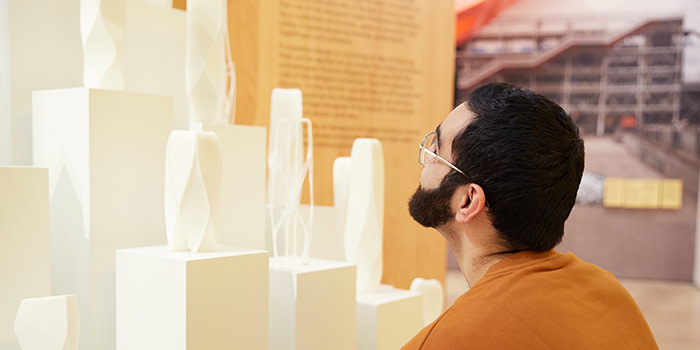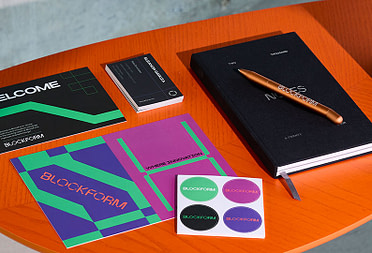Hands-on, people-first: the basics of design thinking
Find out more about the design thinking methodology and its key principles to grow your business.

Agile, disruptive, innovative… Design thinking is one of these buzzwords the modern business world is so fond of. But what exactly is design thinking? Far from an empty trend, this problem-solving methodology aims to put people back centre stage to design more effective solutions.
Find out more about the design thinking methodology, its key principles and how to use it to grow your business.
What is design thinking?
Before we get to the definition of design thinking, let’s make one thing clear: design thinking is not just about design. It’s a people-first approach centred around solving problems in a creative, inherently human way. The design thinking process is all about iteration. It’s a constant flow of testing and learning to create innovative solutions focusing on people’s evolving needs, from products to services, processes, and organisations.
The principles of design thinking
The design thinking approach is characterised by a few key principles which drive creativity and innovation.
Put yourself in their shoes
The design thinking methodology aims to put people’s needs at the root of ideation. David Kelley, founder of design firm IDEO and creator of the Stanford d.school, and his brother Tom Kelley theorised this in their book Creative Confidence. They define empathy as the core of the approach, with the objective of better understanding people’s needs – be they customers, businesses or town residents. Rigorous observation and measurement of the target population’s behaviour leads to more effective solutions that answer existing physical, emotional and psychological needs.
Keep an open mind
Keeping an open mind and challenging assumptions are two essentials for effective design thinking. Thanks to a better understanding of customer and user needs, design thinking aims to redefine problems by basing the brainstorming process on facts and data rather than assumptions. Listen to what the data has to tell you about your subjects instead of trying to use it to confirm your predictions.
Alternate thinking processes
The concept of ideation in design thinking is characterised by its reflectivity. It alternates between two thought processes called “divergent” and “convergent” thinking to identify innovative solutions.
- Divergent thinking explores a variety of potential solutions to a problem in a free-flowing manner. It’s your typical, joyfully chaotic brainstorming session.
- Convergent thinking is the organisation of relevant ideas and information to assess their relevance in answering a specific problem. The process consists in structuring the information into a logical process, and then identifying the most appropriate solution.
The combination of both processes leads to a variety of both creative and relevant solutions.
Test and learn
Iteration is one of the most important principles of design thinking. First, the “winning” solutions generated during your ideation process will need to be prototyped, tested and retested until they become a suitable contender for implementation. But the design thinking process doesn’t end once ideas are translated into solutions. Testing and retesting solutions, measuring results and drawing lessons from them is at the core of the process. The design thinking approach puts the focus on continuous evaluation and learning.
The 5 steps of design thinking
1) Empathise
Collect data about your target population. Use analytics to better understand who your user is and what matters to them. You can also use reviews, customer interviews and panels to better understand your audience.
Looking to launch a new chocolate bar for millennials? Find out what their favourite flavours are, what they love about other products on the market – and what they dislike, too. You should also learn more about the narratives they’re most attracted to and what they care about. Forget about your assumptions – you might be surprised!
2) Define
At this stage, you should get a clear idea of who your target is. Based on the data you collected, define what their needs are. That will allow you to frame the problem you’ll be answering with your product or service.
If you’re running an e-commerce business, you might want to understand why shopping carts are full but your users never complete their purchase. Is there any pain point along the way you weren’t aware of? Do they struggle to understand what to do next? Defining the problem is the first step towards a solution.
3) Ideate
You have the user. You have the problem. Now, it’s time to let your creative juices flow and imagine it better. Brainstorm freely to come up with a variety of creative solutions. Don’t be afraid to think big! Innovation starts with imagination. Use divergent thinking to recenter and assess the relevance of your potential solutions.
Say you’re launching a new money management app. Do your users need a breakdown of their expenses? Do they want cashback on their most used services and products? Do they want to share expenses with friends? Generate new ideas with your team with a “yes…and?” attitude.
4) Prototype
Make it happen. Build a representation of your chosen solution(s) – and show it. Whether it’s a prototype, storyboard or mockup, it will help face your idea with reality. Keep it simple – you don’t need to have an almost-final product to share it and get feedback. What works? What doesn’t? Don’t be afraid to fail, and learn from your mistakes to iterate quickly.
Designed a new website for a client? Show a rough mockup before you get started, and collect feedback. Do people understand each function? Can they identify where the key elements are? How easy is it for them to find information? Their perception of your draft will help you iterate quickly and solve potential problems early on.
5) Test
The prototype is built, and your team is happy. But what about your target audience? The design thinking approach starts and ends with people. Share your prototyped solution with the end user to assess its relevance to their original problem. Do they understand what it is? Does it feel necessary to them? Listen to them, and use the learnings to refine your product.
Imagine you’re a flower delivery service and you want to add candy to your offer. Make the option available to a small subset of customers and see how much they purchase. Ask them for feedback: did it seem relevant to them? Do they like the packaging? Should there be vegan options? Don’t hesitate to run more customer interviews to better frame the problem and how to implement these learnings into your product.
Brainstorm in style and bring your most brilliant ideas to life with MOO x Seth Godin’s Ship It Journal.
Keep in touch
Get design inspiration, business tips and special offers straight to your inbox with our MOOsletter, out every two weeks.






